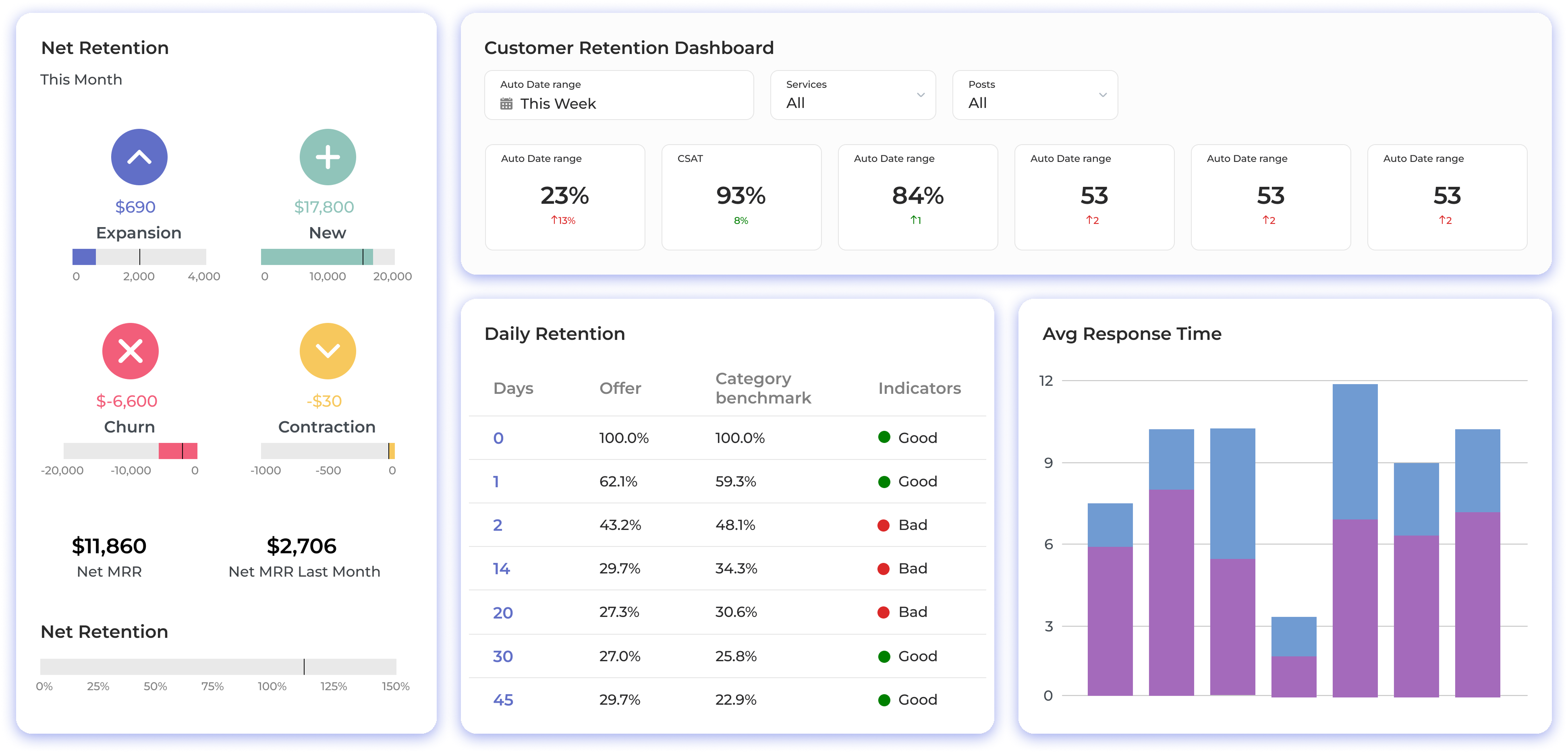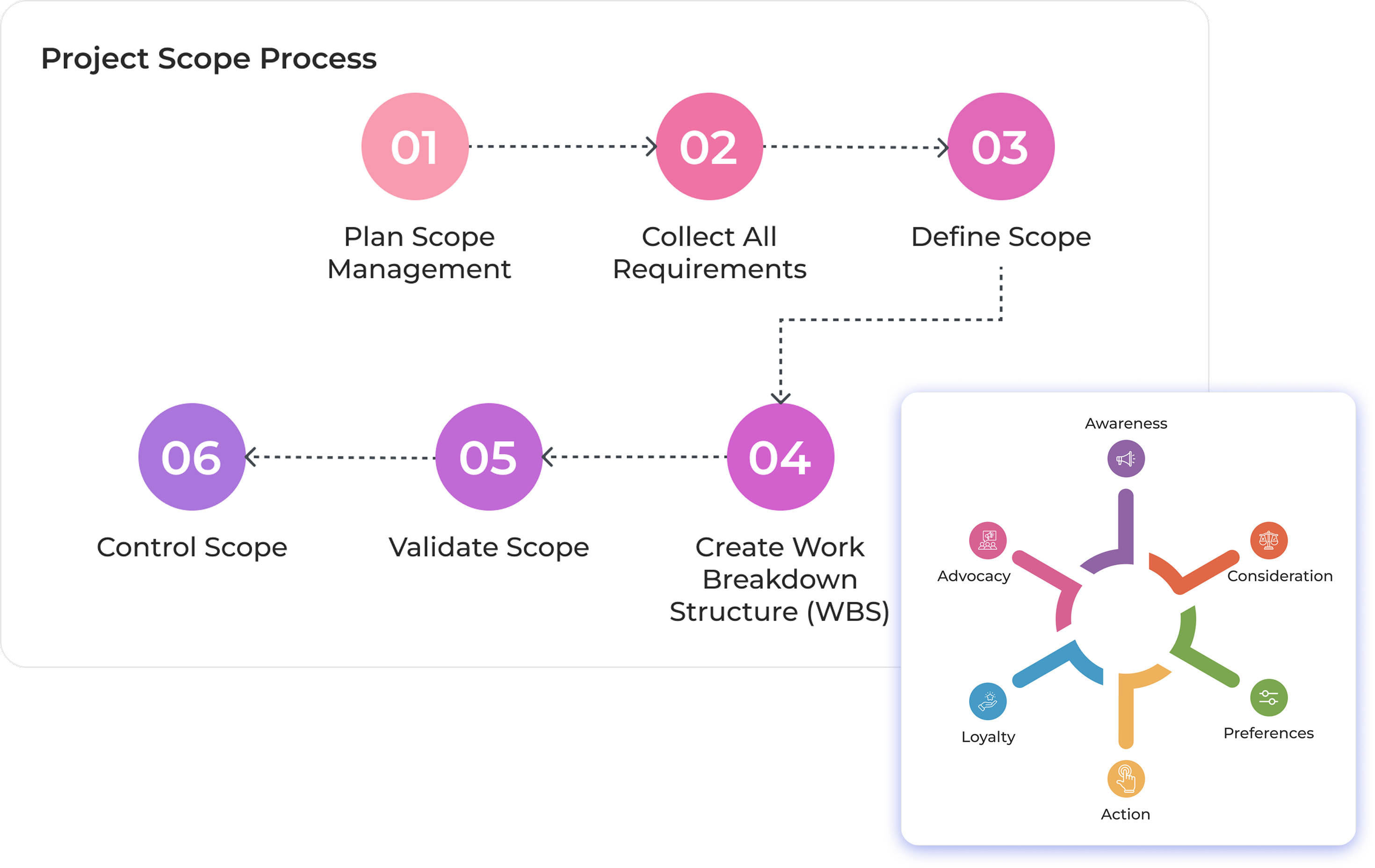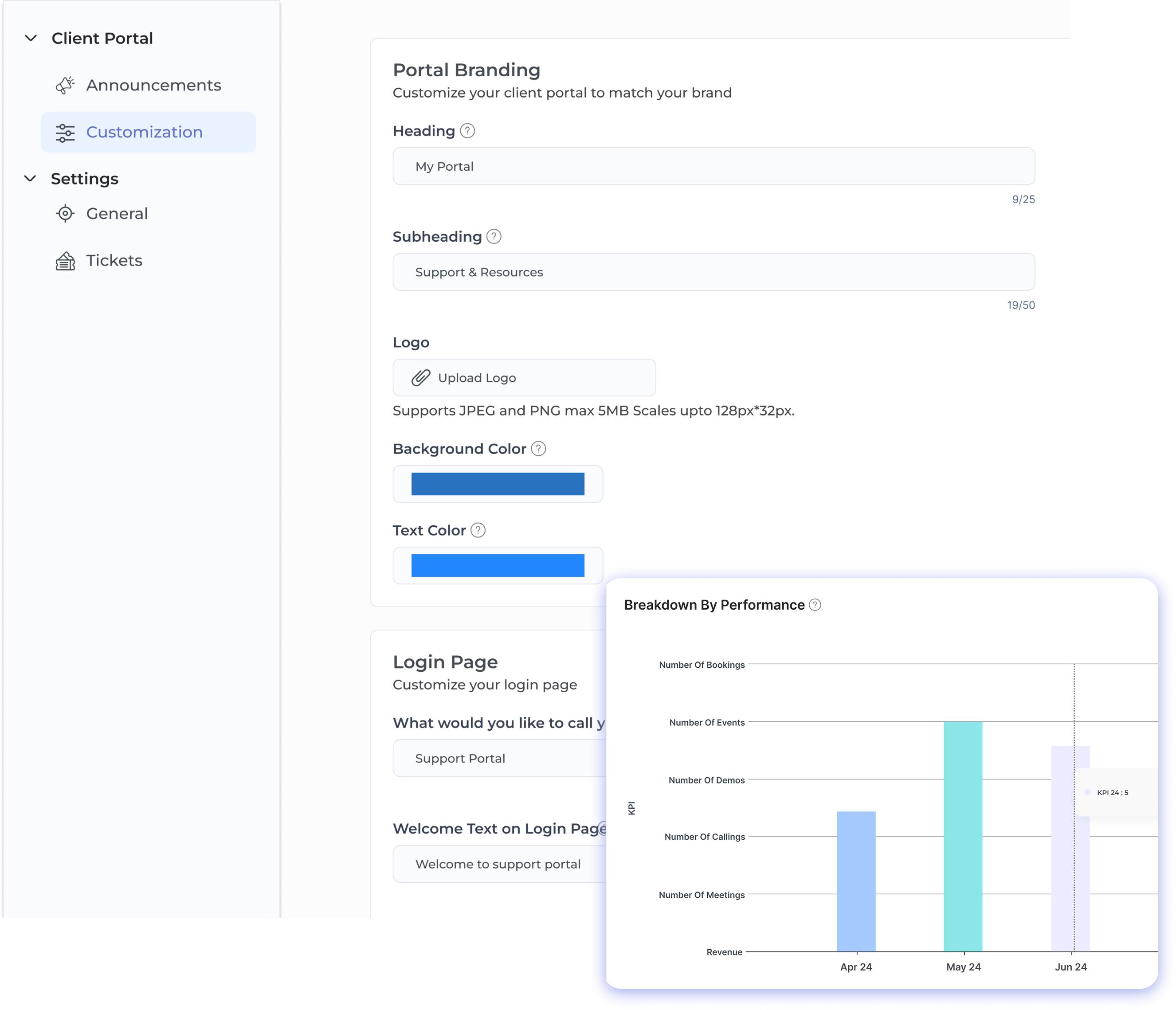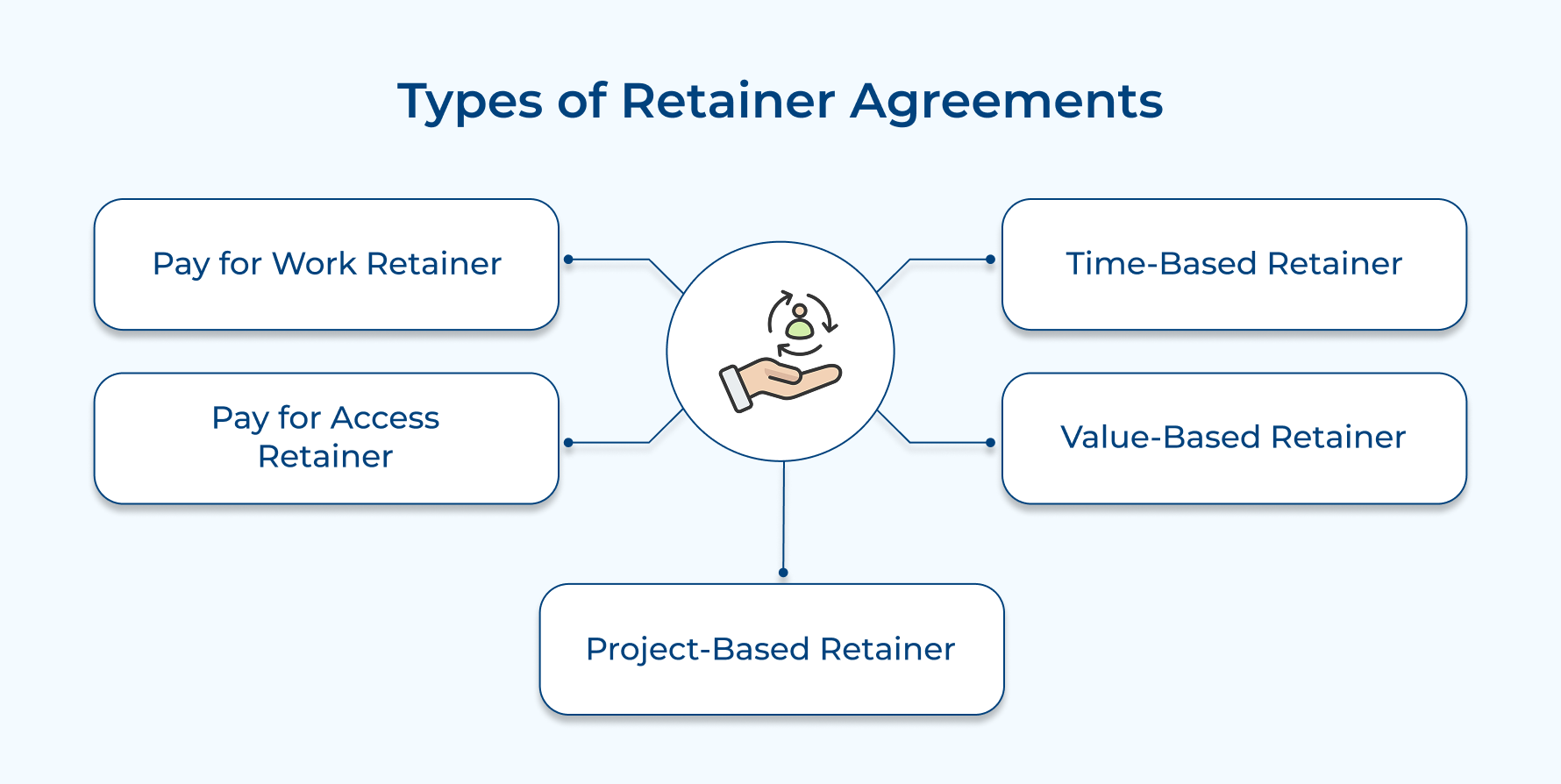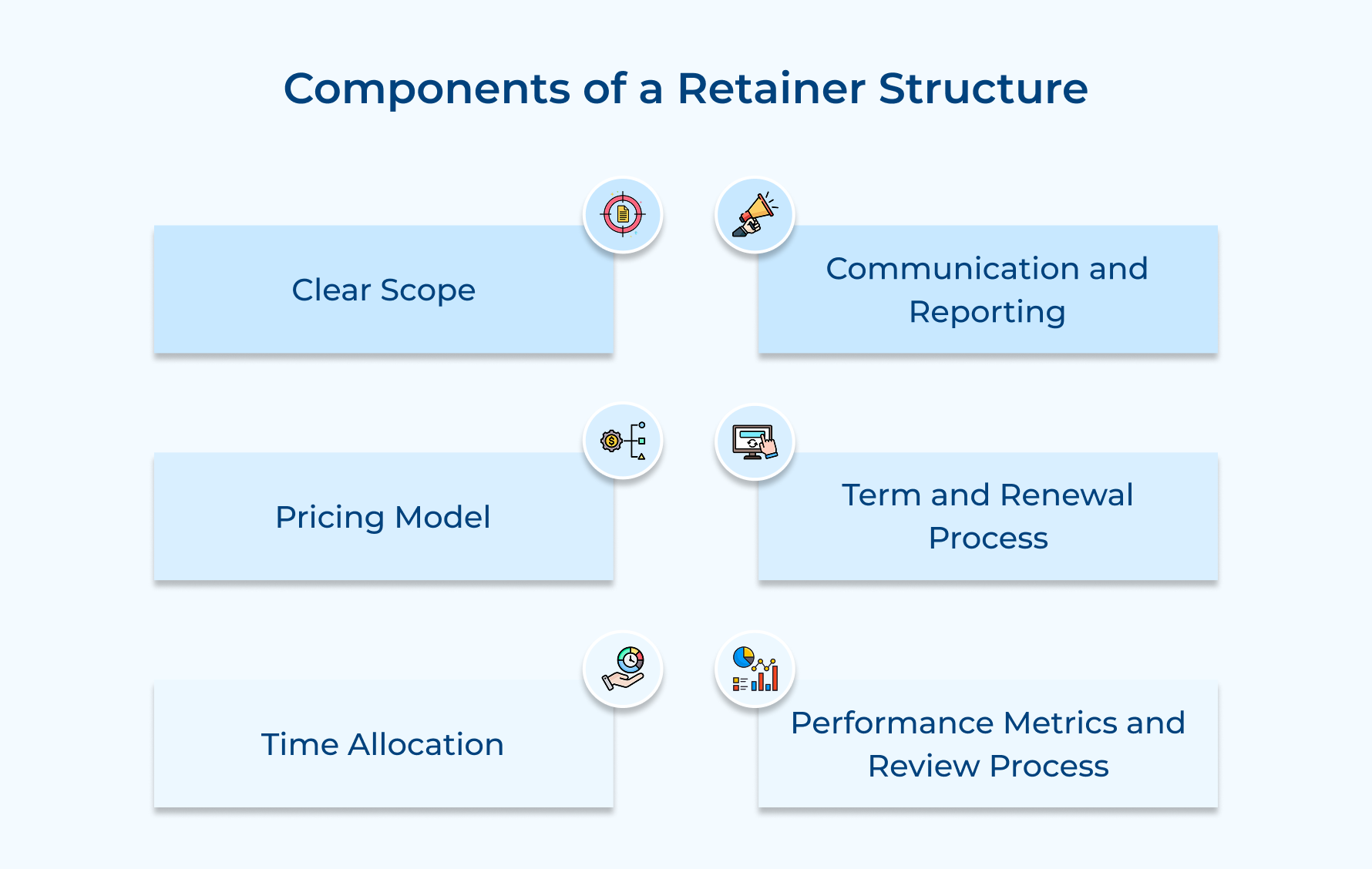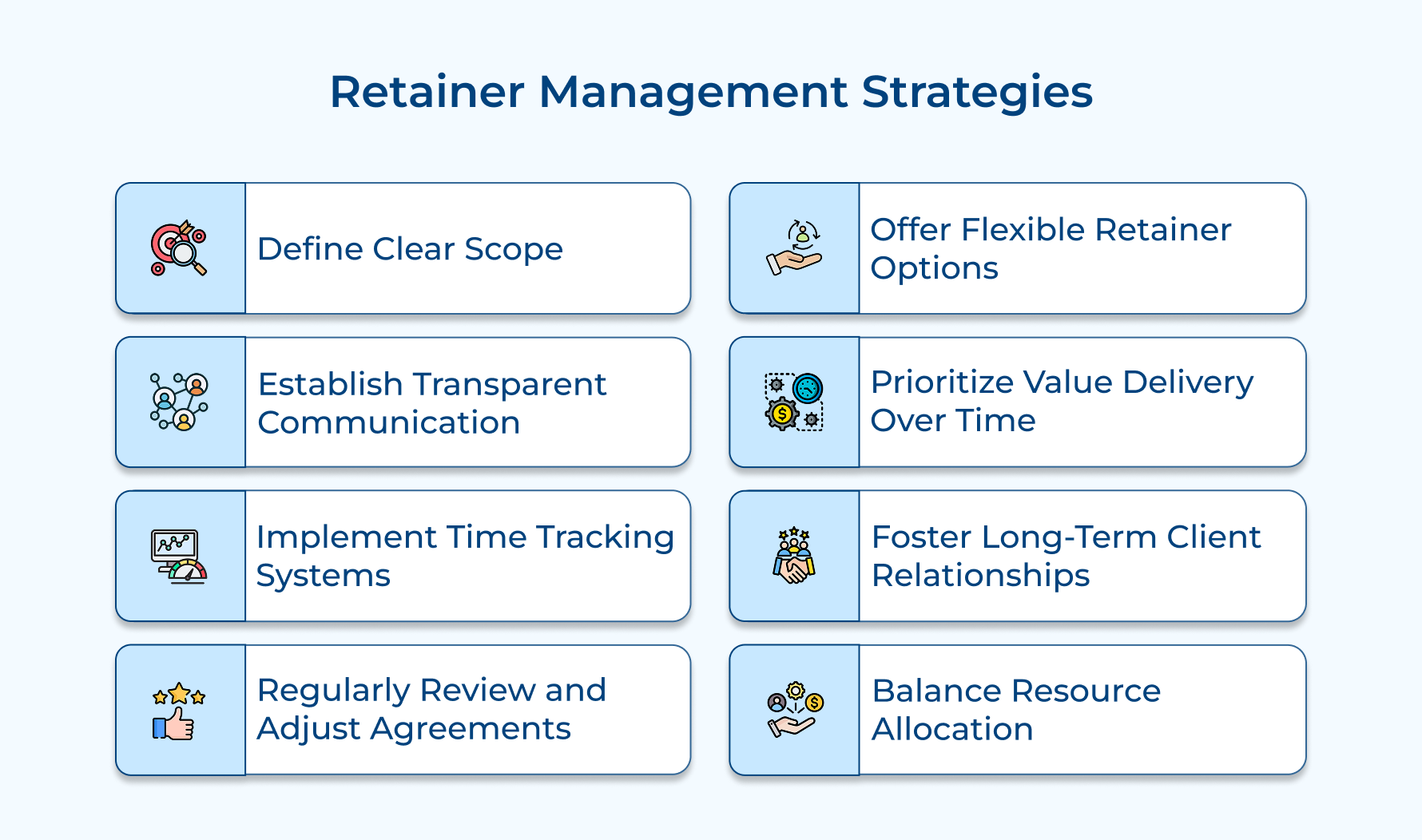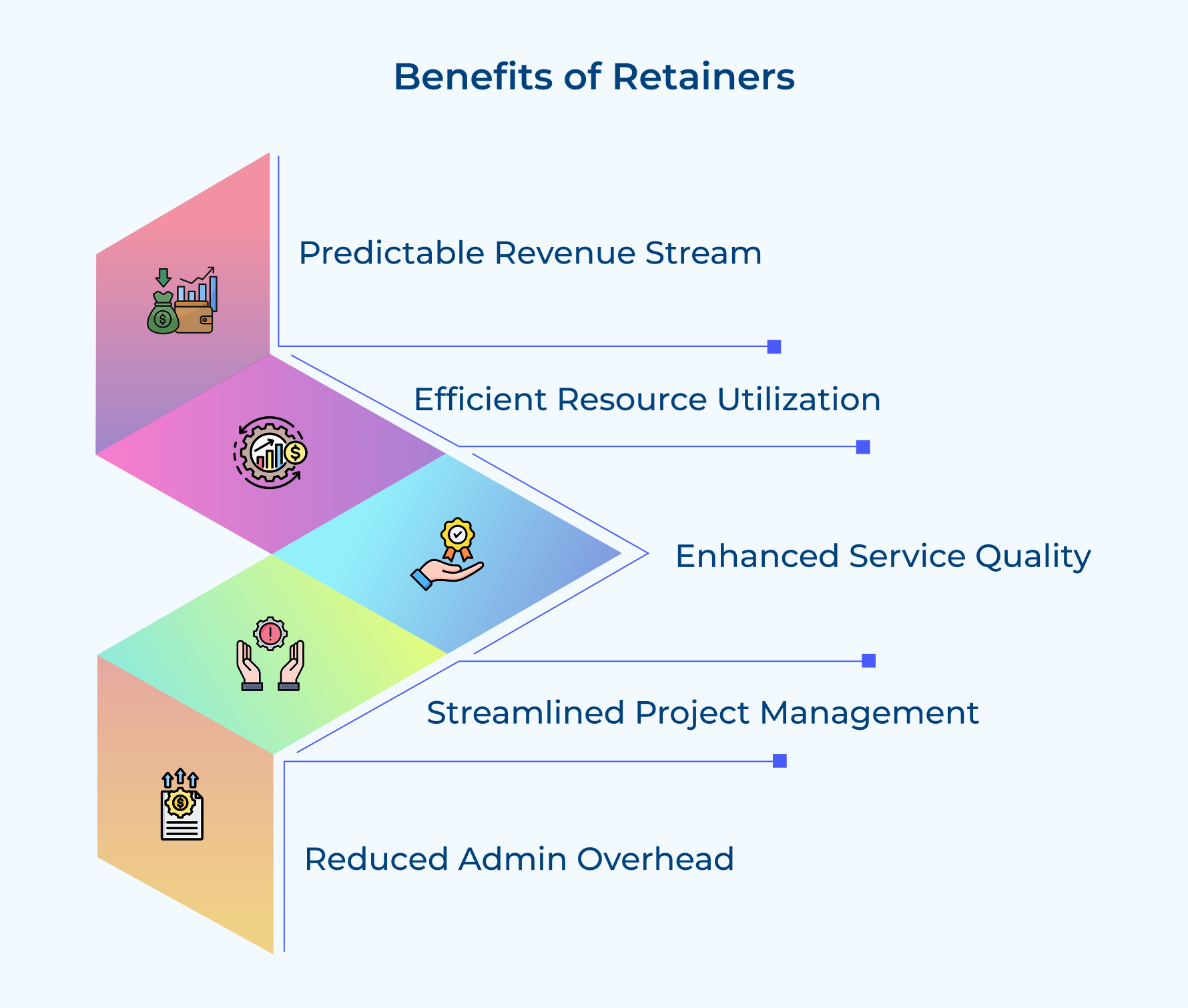1. Define Clear Scope and Deliverables
A clear scope prevents misunderstandings, manages client expectations, and protects agencies from scope creep. The clarity ensures that both parties understand what’s included in the retainer, reducing disputes and building trust. It also helps in resource planning and maintaining profitability.
Implementation tips:
- Create detailed service-level agreements (SLAs) outlining specific tasks, timelines, and outcomes.
- Use collaborative tools to document and share scope definitions, allowing for easy reference as well as updates when needed.
2. Establish Transparent Communication and Reporting
Transparent communication builds trust, demonstrates value, and keeps clients informed about progress. Regular reporting helps justify the retainer investment, showcases achievements, and provides opportunities for feedback as well as optimization. It also helps in identifying potential issues early.
Implementation tips:
- Set up automated weekly or monthly reports highlighting key metrics, tasks completed, and upcoming work.
- Schedule regular check-in calls to discuss progress, address concerns, and align on priorities.
3. Implement Robust Time Tracking Systems
Accurate time tracking solutions help businesses understand profitability, optimize resource allocation, and justify retainer fees. It provides data for informed decision-making about pricing and scope adjustments. It also helps in identifying inefficiencies and areas for improvement.
Implementation tips:
- Use user-friendly time-tracking software that integrates with project management tools.
- Educate team members on the importance of accurate time logging and make it a part of daily routines.
4. Regularly Review and Adjust Agreements
Regular reviews ensure that retainer agreements remain relevant and beneficial for both parties. They allow for adjustments based on changing needs, market conditions, or agency capabilities. The flexibility helps maintain client satisfaction and protects the agency’s interests.
Implementation tips:
- Schedule quarterly or bi-annual review meetings to assess retainer performance and discuss potential adjustments.
- Use data-driven insights from time tracking and reporting to guide discussions as well as justify changes.
5. Offer Flexible Retainer Options
Tailored retainer options cater to diverse client needs and budgets, making your services more attractive. Flexibility can lead to higher client satisfaction and retention. It also allows agencies to optimize their service offerings and resource allocation.
Implementation tips:
- Develop a range of retainer models (e.g., time-based, project-based, value-based) to suit different client preferences.
- Create modular service packages that clients can mix and match to create customized retainers.
6. Prioritize Value Delivery over Time
Focusing on value rather than hours emphasizes outcomes over inputs, aligning agency efforts with client goals. This approach can lead to higher client satisfaction, stronger relationships, and potentially higher fees based on perceived value rather than time spent.
Implementation tips:
- Define clear, measurable KPIs for each retainer that align with the client’s business objectives.
- Implement value-based pricing models where appropriate, tying compensation to achieved results rather than hours worked.
7. Build Long-Term Client Relationships
Long-term relationships provide stable revenue, reduce client acquisition costs, and often lead to expanded services. Proactive relationship management combined with client project management software ensures smoother workflows and better client satisfaction.
Implementation tips:
- Assign dedicated account managers to nurture client relationships beyond day-to-day project work.
- Regularly share industry insights, proactive recommendations, and value-added services to demonstrate ongoing commitment.
8. Balance Resource Allocation across Clients
Effective resource allocation ensures all retainer clients receive appropriate attention while maximizing agency efficiency. It helps prevent overservicing some clients at the expense of others and maintains overall profitability. Balanced allocation also supports team morale while preventing burnout.
Implementation tips:
- Use resource management software to visualize and optimize team workloads across all retainer clients.
- Implement a system for prioritizing tasks across clients based on urgency, importance, and retainer value.
